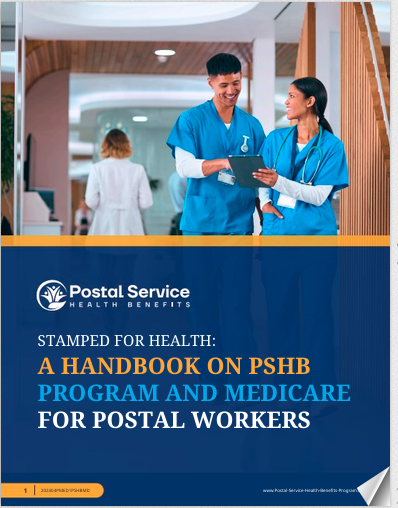Key Takeaways
-
The Postal Service Health Benefits (PSHB) program replaces the Federal Employees Health Benefits (FEHB) program for USPS employees and retirees in 2025, bringing new coverage rules and requirements.
-
If you are a USPS retiree or employee, you must review your plan during Open Season to ensure you are enrolled in a PSHB plan that meets your needs, especially if you are eligible for Medicare.
The Shift to PSHB: What It Means for You
If you are a United States Postal Service (USPS) employee or retiree, the Postal Service Health Benefits (PSHB) program is now your primary health insurance system. As of January 1, 2025, the old Federal Employees Health Benefits (FEHB) program no longer covers USPS workers and retirees. Instead, PSHB offers plans designed specifically for USPS personnel, with different coverage structures, costs, and integration with Medicare.
This transition affects your health coverage in significant ways, including eligibility requirements, cost-sharing, and available benefits. Staying informed about these changes can help you avoid surprises and ensure you get the most out of your coverage. Understanding these shifts is particularly important if you are a retiree who depends on long-term healthcare stability or an employee who needs to plan for future coverage changes.
Who Needs to Take Action?
You should pay close attention to your PSHB plan options if you fall into any of the following categories:
-
Current USPS employees – You are automatically transferred to a PSHB plan, but reviewing your options during Open Season is highly recommended to ensure you get the best coverage for your needs.
-
USPS retirees and annuitants – If you retired before 2025, you need to enroll in a PSHB plan to maintain coverage and ensure your benefits continue without disruption.
-
Medicare-eligible retirees – You may need to enroll in Medicare Part B to maintain full PSHB benefits, as PSHB integrates with Medicare in specific ways that could affect your coverage.
-
Family members covered under USPS plans – Ensure that your dependents are enrolled correctly under PSHB to avoid coverage lapses.
Medicare Enrollment Now Plays a Bigger Role
For USPS retirees, one of the biggest changes in 2025 is the requirement to enroll in Medicare Part B if you are eligible. This affects your premiums, cost-sharing, and access to benefits. If you retired before January 1, 2025, and are already enrolled in a health plan, you are not required to sign up for Medicare Part B. However, retirees who become Medicare-eligible in 2025 or later must enroll to avoid losing certain benefits under PSHB.
What Medicare Means for You
-
Lower out-of-pocket costs – Many PSHB plans coordinate with Medicare to reduce deductibles and copays, making healthcare more affordable in the long run.
-
Prescription drug coverage – If you are Medicare-eligible, your PSHB plan automatically provides Medicare Part D prescription drug coverage through an Employer Group Waiver Plan (EGWP), simplifying access to medications.
-
Medicare Part B premium considerations – While Part B requires an additional monthly premium, some PSHB plans offer reimbursements to offset this cost, helping retirees manage expenses.
-
Coordination of benefits – Your PSHB plan will work alongside Medicare to provide streamlined healthcare services, reducing administrative headaches and improving coverage efficiency.
Open Season: Your Window to Make Changes
The PSHB Open Season occurs from November to December every year, allowing you to:
-
Change your PSHB plan to better fit your healthcare needs.
-
Add or remove dependents from your plan to keep your coverage aligned with your household’s needs.
-
Evaluate Medicare integration if you are newly eligible and ensure you meet any necessary enrollment requirements.
If you don’t make any changes during Open Season, you will remain enrolled in your current PSHB plan unless otherwise required to transition due to Medicare eligibility. Missing this window could mean waiting until the next Open Season to adjust your plan, so it’s crucial to review your coverage annually.
What’s Changing in PSHB Plan Costs?
PSHB plans differ from FEHB in how costs are structured. Here’s what you need to be aware of:
-
Premium contributions – The government continues to cover about 70% of the premium for employees and retirees, ensuring affordable access to healthcare.
-
Deductibles and copayments – These vary depending on the PSHB plan you choose, with some offering reduced costs for Medicare enrollees. Higher-deductible plans may have lower monthly premiums but could require more upfront expenses.
-
Out-of-pocket maximums – In 2025, the in-network maximum is $7,500 for Self Only and $15,000 for Self Plus One or Family plans, ensuring financial protection against catastrophic medical costs.
-
Coinsurance rates – Most plans have 10%-30% coinsurance for in-network services, while out-of-network services may have higher cost-sharing, making it essential to choose providers carefully.
Prescription Drug Coverage: How It Works Now
With PSHB, prescription drug coverage is automatically included, making it easier for employees and retirees to access necessary medications. If you are a retiree with Medicare, your PSHB plan will place you into an Employer Group Waiver Plan (EGWP) for Medicare Part D, which helps reduce drug costs. For non-Medicare enrollees, standard PSHB prescription drug benefits apply.
Key changes in 2025:
-
$2,000 cap on out-of-pocket drug costs – Once you hit this limit, your plan covers all remaining medication costs for the year, significantly reducing financial burdens.
-
Lower generic drug costs – Many PSHB plans offer affordable copays for generic medications, making it easier to stick to prescribed treatments.
-
Mail-order pharmacy options – Some plans provide discounts on medications ordered through mail delivery, offering added convenience and cost savings.
What If You’re a USPS Employee Nearing Retirement?
If you are planning to retire in the next few years, here’s what you should know:
-
Enroll in a PSHB plan before retirement – You need to be covered under PSHB for at least five years before retirement to continue coverage as a retiree.
-
Plan for Medicare Part B enrollment – If you retire after 2025, enrolling in Part B is mandatory for maintaining full PSHB benefits, so factor this into your retirement planning.
-
Understand annuitant premium contributions – As a retiree, you will pay a share of your PSHB premium, which may differ from employee rates, so reviewing cost expectations ahead of time is crucial.
Special Enrollment Periods: When Can You Make Changes Outside of Open Season?
Certain life events allow you to adjust your PSHB coverage outside of the annual Open Season, including:
-
Retirement – You can select a PSHB plan when transitioning from employee to annuitant status, ensuring continuous coverage.
-
Medicare eligibility – When you turn 65, you may need to enroll in Medicare Part B to maintain full PSHB benefits.
-
Family changes – Marriage, divorce, or having a child qualifies you for a special enrollment period to update your plan and ensure adequate coverage for dependents.
Staying on Top of PSHB Updates
With PSHB replacing FEHB for USPS employees and retirees, it’s important to stay informed about your coverage. Plan benefits, costs, and Medicare integration requirements will continue to evolve, so checking your plan options during Open Season each year is essential.
If you have any questions about how PSHB affects your retirement healthcare, reach out to a licensed agent listed on this website for professional guidance tailored to your situation.







